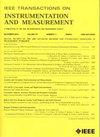Two 3D-Printed Sensitive Cylindrical Sensors for Characterizing Organic Liquids
IF 5.6
2区 工程技术
Q1 ENGINEERING, ELECTRICAL & ELECTRONIC
IEEE Transactions on Instrumentation and Measurement
Pub Date : 2025-07-10
DOI:10.1109/TIM.2025.3587363
引用次数: 0
Abstract
In this article, two highly sensitive sensors based on cylindrical cavities for measuring the complex permittivity of organic liquids are presented. To analyze the sensing performance, the two sensors are designed at the working frequency of around 20 GHz, where the relaxation frequencies of some common lossy liquids are located. For liquid sensing, a Teflon tube is designed at the sensing area. Based on full-wave simulations, the characterization principles are provided, and additionally, the sensing range for the complex permittivity of lossy liquids is analyzed. Next, by using selective laser melting (SLM) additive manufacturing technology, the two sensors are fabricated. However, due to manufacturing tolerance, there is a slight difference between the fabricated sensors and the simulated ones. Therefore, further simulations are performed for calibration of the complex permittivity characterization formulas. The two sensors are used to measure seven pure organic liquids and ten liquid mixtures, which are commonly used for industrial applications. The measurement procedure is simple and nondestructive. By comparing with literature data, the two sensors are validated to provide reliable results. The experimental validation also demonstrates that the proposed devices have good sensitivity to the complex permittivity of liquids. Their good performance is also validated by comparing with other sensors reported in the literature.两个用于表征有机液体的3d打印灵敏圆柱形传感器
本文介绍了两种用于测量有机液体复介电常数的高灵敏度圆柱形腔传感器。为了分析传感器的传感性能,将这两个传感器设计在20 GHz左右的工作频率,这是一些常见有耗液体的弛豫频率所在的位置。对于液体传感,在传感区域设计了一个聚四氟乙烯管。在全波仿真的基础上,给出了表征原理,分析了有耗液体复介电常数的传感范围。其次,采用选择性激光熔化(SLM)增材制造技术,制备了两个传感器。然而,由于制造公差的原因,制造的传感器与模拟的传感器之间存在细微的差异。因此,对复介电常数表征公式进行了进一步的仿真校正。这两个传感器用于测量7种纯有机液体和10种通常用于工业应用的液体混合物。测量过程简单,无损。通过与文献数据的比较,验证了两种传感器的可靠性。实验验证表明,该装置对液体的复介电常数具有良好的灵敏度。通过与文献中报道的其他传感器的比较,验证了其良好的性能。
本文章由计算机程序翻译,如有差异,请以英文原文为准。
求助全文
约1分钟内获得全文
求助全文
来源期刊

IEEE Transactions on Instrumentation and Measurement
工程技术-工程:电子与电气
CiteScore
9.00
自引率
23.20%
发文量
1294
审稿时长
3.9 months
期刊介绍:
Papers are sought that address innovative solutions to the development and use of electrical and electronic instruments and equipment to measure, monitor and/or record physical phenomena for the purpose of advancing measurement science, methods, functionality and applications. The scope of these papers may encompass: (1) theory, methodology, and practice of measurement; (2) design, development and evaluation of instrumentation and measurement systems and components used in generating, acquiring, conditioning and processing signals; (3) analysis, representation, display, and preservation of the information obtained from a set of measurements; and (4) scientific and technical support to establishment and maintenance of technical standards in the field of Instrumentation and Measurement.
 求助内容:
求助内容: 应助结果提醒方式:
应助结果提醒方式:


